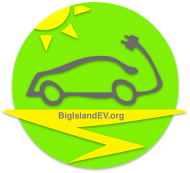As part of achieving Hawaii’s commitment to 100% energy self reliance by 2045, the state continues to view broader EV adoption as a key enabler and works to understand and mitigate barriers to this adoption. Last year, a working group (Act 164) was assembled to study to situation, particularly that of ‘multi-unit dwellings’ (MUDs)– apartments, condos, and townhomes. The December 2015 report is filled with good details so take a moment to read.
Highlights:
- We lead the nation in the number of charging stations per capita. This clearly does not represent the situation on the Big Island but it is interesting.
- As of last November, there were close to 4000 EVs in the state of Hawaii. This represents a 27% increase from the prior year. Overall, this is less that 1% of vehicles in the state – we have a long way to go.
- There are a number of laws and incentives already in place to spur adoption:
- A charger at commercial/state/county establishments with 100 or more parking spaces
- Free EV parking at state or county facilities.
- HOV lane restriction exemption
- Conditional right to install chargers in multi-unit dwellings
- Penalties for non-EVs parked in EV spots
- Installation of charging stations in Multi Unit Dwellings is important. According to the report, MUDs represent close to 40% of Hawaii’s housing. Of course, retrofitting existing MUDs presents a number of challenges and barriers.
- The group listed a set of findings and recommendations:
- Flexibility – each MUD is unique so each installation must be handled with some level of flexibility (any legislation must take this into account).
- Incentives – State incentives will be required to facilitate the installations in MUDs. Funding may come from ‘public benefits fees’. What this would cover is not clear. However, the report indicates that this would not cover local infrastructure enhancements – this is something that would still need to be addressed by the occupants of the MUD.
- Utility Support – Our utilities have an important role in addressing barriers to installation.
- Support of the Sustainable Transportation Act (38) – Recognition that a multi-pronged approach (MUD, non MUD, workplace, public facility charging infrastructure) is needed to enable Hawaii to meet is energy independence goals.
- Sub Meters – A way to mitigate some of the costs associated with charging infrastructure in MUDs.
- New Construction – Encouraging developers to include EV charging infrastructure in new buildings. A 2018 building code update is suggested.
- Education – Awareness of the need, consumer demand, benefits, and requirements related to EV charging infrastructure is an on-going need.
The full report can be found here.
